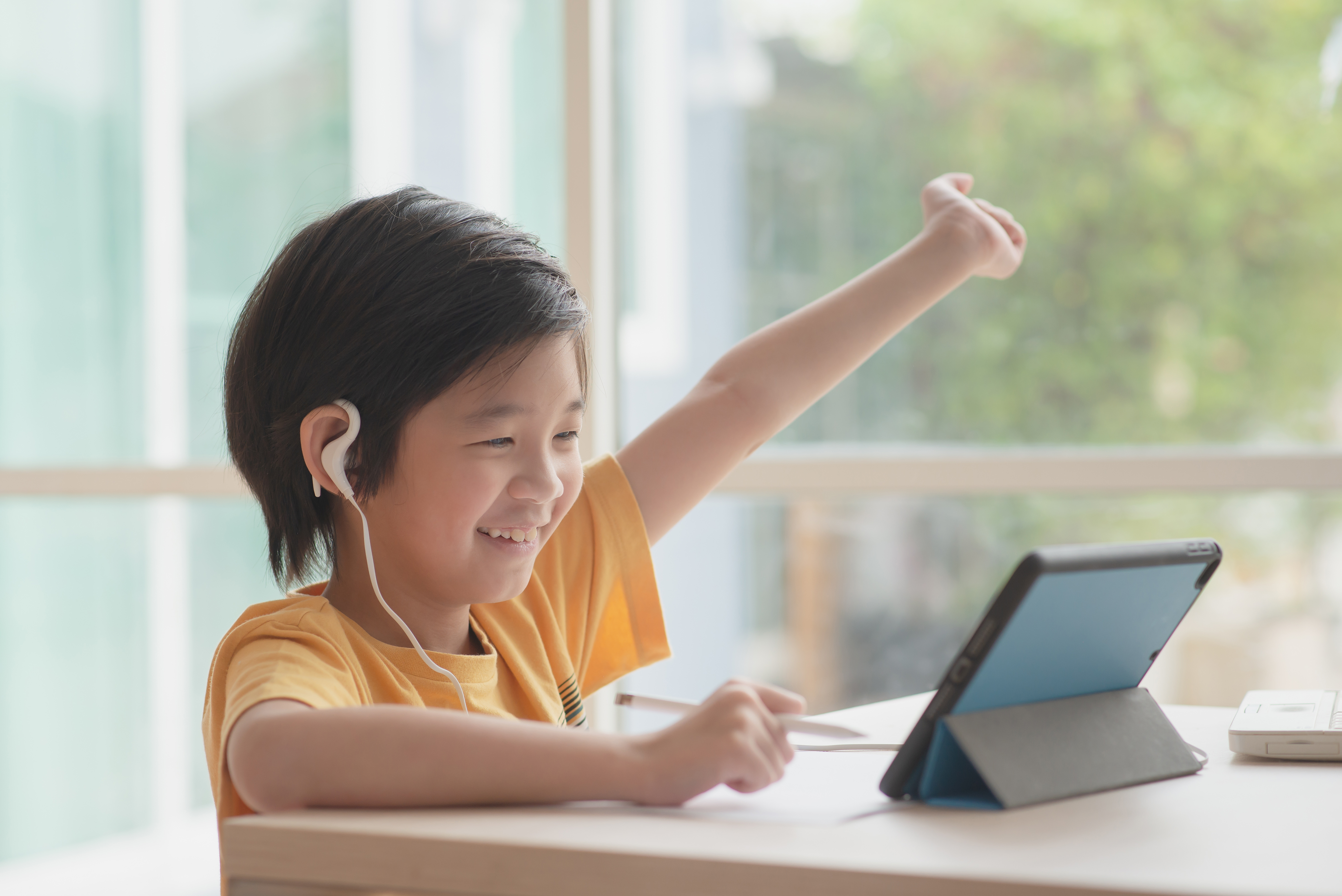5 tips on using screen time as an advantage for bilingual children: parents’ ultimate guide
Knowing at least one foreign language is a must in today’s dynamic and global world. Without English, it is difficult to travel, enjoy modern pop culture, or have access to international information. Parents who care about their children’s future more and more, often decide to raise them bilingual from an early age.
Find out why speaking fluent English is so important and how to use modern technology and the time your child spends in front of screens to effectively learn in bilingual mode. Explore 5 tips on using screen time as an advantage for bilingual children. Also, check out other parents’ approaches and their results.
Advantages of bilingual child development
Introducing English as a second language to young children affects their cognitive development.
Scientists* indicate that strong stimulation of the frontal lobe, necessary when switching between two languages, improves cognitive skills such as memory, concentration, simultaneous task execution, creativity, comprehension and mental flexibility.
Furthermore, bilingual children have a better professional career in the future. Bilingual applicants find jobs faster, get more interesting proposals and earn a higher salary on average.
Raising children bilingual also encourages them to be more open to the diversity of the world. Bilingual children develop social skills faster and are more likely to have international friendships.
In addition to this, being bilingual promotes self-realization and keeps the brain healthy. It also delays the aging process, as well as the onset of diseases such as Alzheimer’s.

Screen time as an advantage for bilingual English education
According to the results of our research**, children aged 4-12 across the globe tend to spend around 2 hours per week on education-related activities in front of their computer or other electronic devices.
South Korea is the country with the highest screen time spent on education online: almost 49% of parents said their child spends from 3 to 10 hours on online educational activities.
Most of the parents around the world are not worried about the hours spent in front of the screen specifically on educational activities. For example, on English online lessons at Novakid.
However, taking into consideration the fact that kids and teens aged 4-12 tend to spend around 3-6 hours on a weekly basis watching cartoons, films and other video content online, this may raise some questions. For example, “Okay, so what exactly is my kid doing online? Is it beneficial?”
To make it beneficial, it’s worth distinguishing between passive screen time and active screen time. Sitting a young child, alone in front of a screen, is not a good example. However, actively watching and encouraging kids to move and talk back can be used for smart exposure to the target language.
How to teach English to kids – 5 tips on using screen time
Make sure that your kid spends their free time productively. Learn how to use all that screen time as an advantage for bilingual English education. Check out our 5 tips on using screen time appropriately.
Bilingual e-books for kids
E-books are more convenient than traditional books, and they can effectively support bilingual education. A good example of such an e-book is “The Very Hungry Caterpillar” which is available in many bilingual editions.
Since bilingual e-books provide sentences in both languages, children and adults can more easily see similarities between words and are able to compare sentence structure. Having both languages in eye-sight supports developing skills in a second language.
Cartoons and video-content in English
If your child loves watching cartoons and videos, make the most of it. Allow your kid to watch films only in English, so they can be in constant contact with the language. This way, kids can combine what’s pleasant with what’s useful and slowly immerse themselves in an English-speaking environment.
Interactive educational games
Engage your kid to learn English while playing their favorite online games. It doesn’t have to be a language-specific game to help your child build their bilingual skills. As long as your kid interacts and speaks in the target language, it will be beneficial.
While playing their favorite games, children will be conversing, exchanging ideas, and thinking about vocabulary in English. It’s a great opportunity to boost their bilingual skills. A good example might be the Guess the Sound of Animals Game.
Listening and dancing to music in both languages
Singing in a second language is a great way for young children to learn it. Catchy melodies and easy to remember lyrics in both languages will get and hold their attention quickly.
Vocabulary repetition and accompanying dance moves will also support the learning process. YouTube is full of such engaging songs in English.
English online lessons with Novakid
The time which your kid spends in front of a screen, can be also used productively on learning English in a fun, virtual classroom. At Novakid, children learn English with certified native teachers from around the world. Lessons are quick-paced and focus mostly on developing speaking skills.
Grammar and vocabulary is learned through the gamification method, which is proven to be most beneficial in teaching English to kids aged 4-12. During each online lesson at Novakid your child gets 100% attention from their teacher and is fully engaged in the topic. Also, Novakid students tend to retain material quicker than their peers who study English just at school in a traditional classroom. If that’s not a great idea to make the most of your children’s screen time, we don’t know what is!
Share in the comments: what do you think about bilingual education of children? Let us know how you use modern technology to support your child’s bilingualism. We are curious how your children learn language and what methods you use daily.
Did you like the article?
* Based on research conducted by University of York in 2013.
** Conducted by Novakid among 2,000 families in 15 countries in May 2022.









































